1880 |
Etienne-Jules Marey (France) and Eadweard Muybridge (Great Britain) begin experimenting with sequential photographs to study animal and human motion. |
 |
1887 |
| H.W. Goodwin invents celluloid film. |
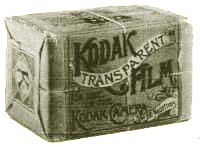 |
1894 |
Louis Loumiere patents the Cinematograph , a machine that combined the funtions of camera and projector. |
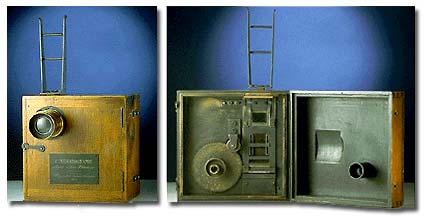 |
Thomas A. Edison films Ruth Dennis doing a skirt dance in front of a building. |
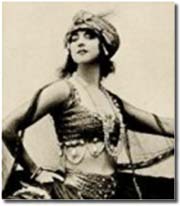 |
1895 |
December 28 – First Film projected to a paying public at the Grand-Cafe on the Boulevard de Capucines. |
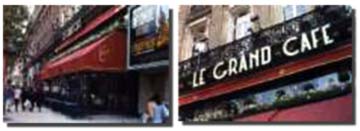 |
1896 |
The first exhibition of Edison's projecting version of a Kinetoscope , called the Vitascope , shows the Leigh sisters doing their umbrella dance in New York City. |
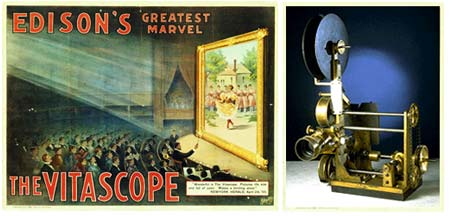 |
1899 |
First magnetic recording of sound. |
1902 |
Peter Elfeldt first records the Royal Danish Ballet performing the choreography of August Bournonville. |
1903 |
Georges Melies, in The Magic Lantern , uses 12 corps dancers and a soloist. |
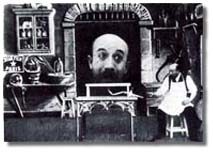 |
1905 |
The first regular cinema is established in Pittsburg, Pennsylvania. |
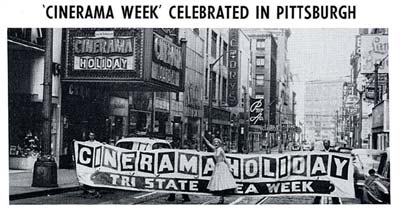 |
1906 |
Louis Lumiere films Loie Fuller in her Fire Dance. |
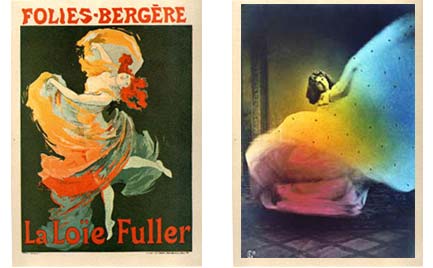 |
1907 |
August Musger invents slow motion. |
| Lumiere develops a process for color photography using a three-color screen. |
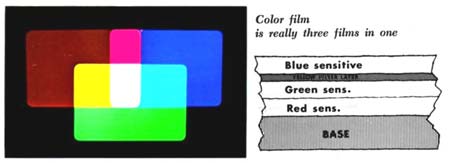 |
1912 |
London has 400 movie houses, each day around 5 million people in the United States go to the cinema. |
1914 |
Vernon and Irene Castle star in the Whirl of Life. |
1916 |
Denishawn Dancers appear in D.W. Griffith's epic Intolerance. |
Anna Pavlova acts in the Dumb Girl of Portici. |
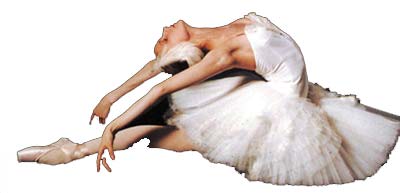 |
1919 |
Hans Vogt (with Massole and Engl) experiments on a new sound film system. |
Charles Chaplin parodies Nijinsky's Afternoon of a Fawn in Sunnyside. |
 |
1922 |
Robert Flaherty directs “ Nanook of the North ”, which portrays intimate details of Inuit life. |
 |
1924 |
Fernand Leger makes “Le ballet mechanique ” his landmark avant-garde film in which he experiments with camera-created motion and rhythm. |
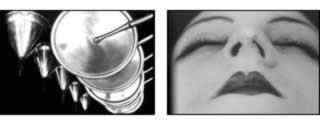 |
Anna Pavlova is filmed dancing her solos, including The dying swan , on the set of Douglas Fairbanks's The thief of Bagdad. |
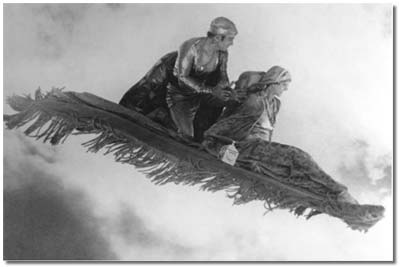 |
Rene Clair makes Entr'acte , a dadaist film, to be shown during the intermission of the ballet Relache by Picabia. |
1927 |
John L. Baird demonstrates the first video system. |
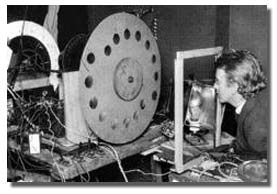 |
1928 |
Diaghilev uses film projections in Leonide Massine's ballet Ode. |
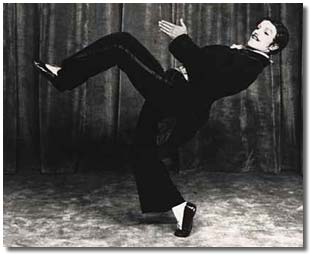 |
Sergei M. Eisenstein makes a rapid montage of three soldiers dancing in three different styles in his film October. |
1928 |
First scheduled television broadcasts by WGY, Schenectady, NY. www.tvhistory.tv |
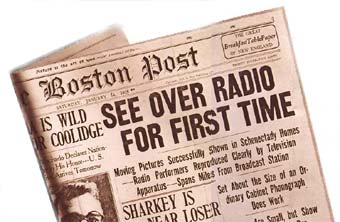 |
First color motion pictures exhibited by George Eastman in Rochester, NY. |
1929 |
All-dancing, all-singing revue films begin to appear. |
Rouben Mamoulian directs Applause , which contains very fluid, rhythmic motion by the standards of early sound film. |
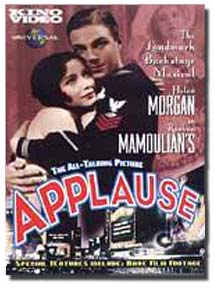 |
Mary Wigman's Hexetanz is filmed in Germany. |
1931 |
May 26: Maria Gambarelli is the first dancer to go before a television camera in America . |
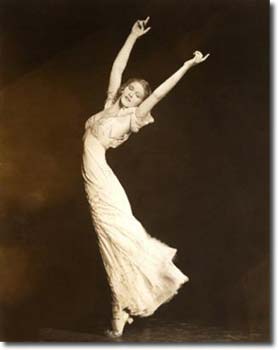 |
1932 |
A spectator films Olga Spessivtzeva in a rehearsal of Giselle, in London theater . |
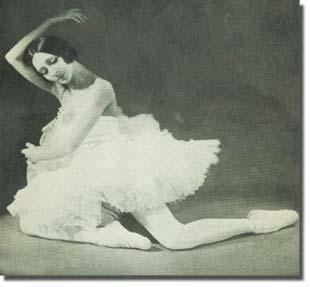 |
1933 |
Busby Berkeley directs his first “backstage” musicals , Gold Diggers of 1933, Footlight Parade and 42 nd Street, in which the dance movement is created by the camera and the editing. |
 |
Fred Astaire makes his first film Dancing Lady with Joan Crawford. His fabled partnership with Ginger Rogers begins. |
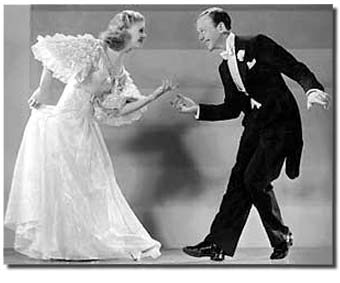 |
1934 |
The Merry Widow, one of several operetta films choreographed by Albertina Rasch, is directed by Ernst Lubitsch using an unusual mobile camera floating above the waltzing dancers. |
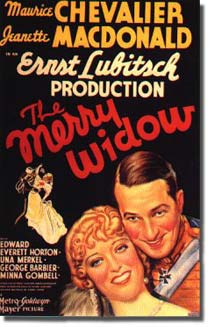 |
Air for the G String is filmed with Doris Humphrey and her ensemble. |
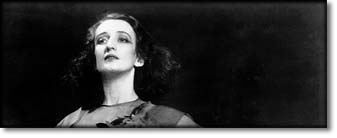 |
1935 |
Max Reinhardt directs a Midsummer Night's Dream, containing a ballet choreographed by Bronislava Nijinska. |
Kinetic Molpai choreographed by Ted Shawn is filmed at Jacob's Pillow. |
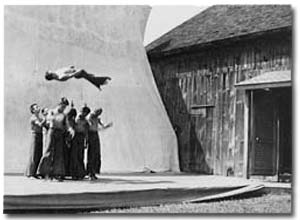 |
1936 |
Agnes de Mille choreographs dances for Irving Thalberg's Romeo and Juliet. |
1937 |
J. Benoit-Levy directs La Mot du Cygne, starring Yvette Chauvivre and Mia Slavenska, the first feature film with the ballet world as its subject matter. |
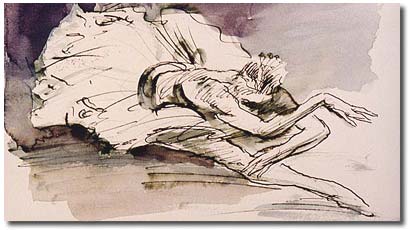 |
1939 |
Cinerama is introduced at the 1939 New York World's Fair. It is improved in 1952 with a three-lens system and resolved into the single-lens 70mm process. |
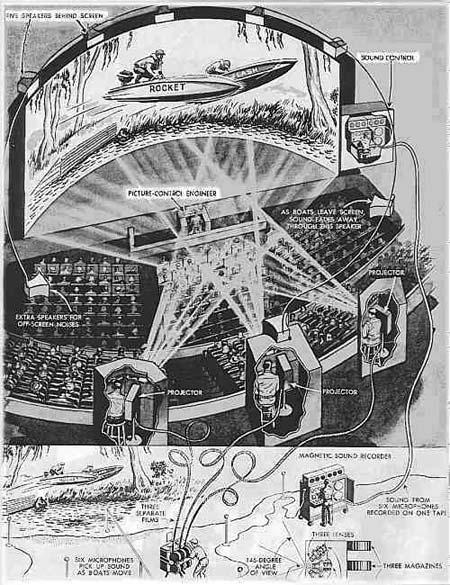 |
The artistic use of color begins and becomes the rule in Hollywood by the 1950s . |
National Film Board of Canada is established. www.nfb.ca |
 |
1940 |
Walt Disney's Fantasia, directed by Ben Sharpsteen, contains music by Bach, Tchaikovsky, Dukas, Stravinsky, Beethoven, Mussorgsky, and Schubert, choreographed with animation. |
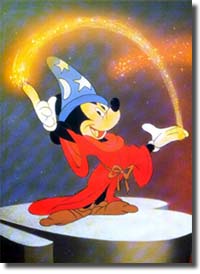 |
1941 |
CBS presents The Country Dance Society, the first group to have a weekly show on Sundays. |
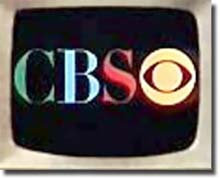 |
1942 |
For Me and My Gal marks the screen debut of Gene Kelly, co-starring with Judy Garland. Busby Berkeley directs the dramatic sections. Bobby Connolly choreographs. |
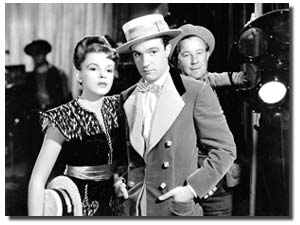 |
1943 |
Lamentation, choreographed and performed by Martha Graham, is directed on 16mm film by Mr. and Mrs. Simon Moselsio, preceded by a brief on-screen discussion of modern dance with critic John Martin. |
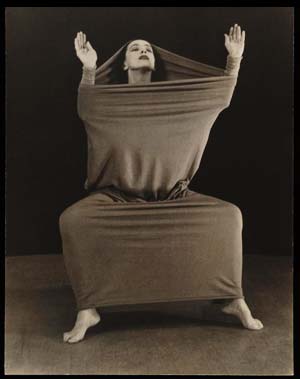 |
1944 |
Cover Girl by Gene Kelly. |
1945 |
Kitty Doner and Pauline Koner begin a dance series on CBS called Choreotones. |
Valerie Bettis becomes staff choreographer for the Paul Whiteman Show, choreographing a 15-minute ballet each week. |
A Study in Choreography f ο r Camera, a film directed by Maya Deren, creates new film space for dancer Talley Beatty. |
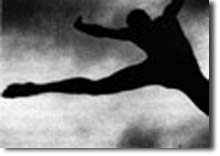 |
1948 |
Michael Powell and Emeric Pressburger direct The Red Shoes, with Moira Shearer, Leonide Massine, Robert Helpmann and Ludmilla Tcherina. |
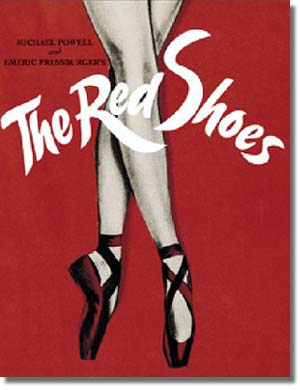 |
1949 |
Stanley Donen and Gene Kelly co-direct On the Town, Kelly also choreographs and stars with Frank Sinatra, Jules Munshin, Vera-Ellen, Betty Garrett and Ann Miller. This is a remake of the 1944 Broadway musical inspired by the ballet Fancy Free, choreographed by Jerome Robbins. |
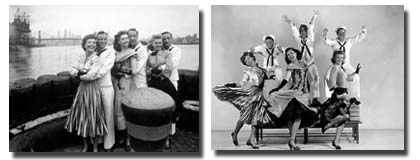 |
Through the Crystal Ball, the first half-hour, all-dance show on TV, airs five episodes over a couple of months, including Cinderella, choreographed by George Balanchine with Herbert Bliss and Tanaquil LeClerq and The Wild West, choreographed by Todd Bolender with LeClerq and Patricia McBride. |
1950 |
CBS presents Ballet Theater in Les Sylphides. |
Nora Kaye and Igor Youskevitch perform Giselle, the first full-length ballet presented on television by CBS. |
1951 |
An American in Paris, written by Alan Jay Lerner and directed by Vincente Minnelli, wins an Academy Award. The 17-minute title ballet is choreographed by Gene Kelly and danced by him and Leslie Caron. |
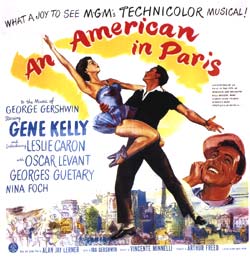 |
1952 |
Gene Kelly and Stanley Donen direct and choreograph Singin' in the Rain. |
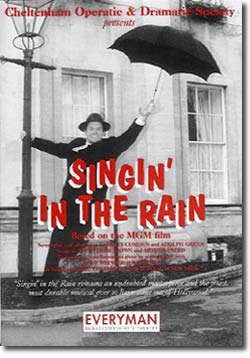 |
Limelight, directed by Charles Chaplin, has dance sequences performed by Melissa Hayden and Andre Eglevsky. |
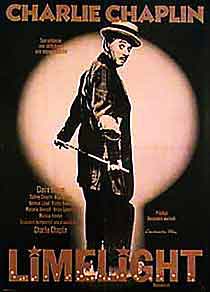 |
Omnibus begins and continues on CBS for nine and a half years, including such dance programming as Agnes de Mille's Rodeo, Eugene Loring's Billy the Kid, and Gene Kelly in Dancing Is a Man's Game. |
1953 |
Most U.S. movie theaters are adapted for CinemaScope film projection. JVC begins research into video recording. |
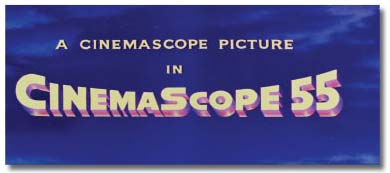 |
1954 |
The zoom (variable focal length) lens, first used in the USA, is introduced on the Bolex camera. |
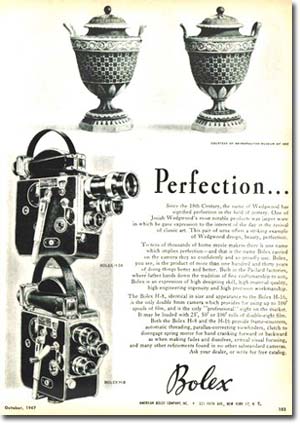 |
Peak of the pre-videotape era: CBS produces 70 hours of live programming a week, all kine-recorded on almost 1 million feet of film stock. |
Seven Brides for Seven Brothers, one of the first dance films in wide-screen format, is directed by Stanley |
Ed Sullivan begins presenting his "really big" show, which continues until 1971 and includes such dance programming as the first American television appearance of the Sadlers Wells Ballet with Margot Fonteyn and Michael Somes, the Royal Danish Ballet in Napoli, the London Festival Ballet, Ruth Page's Chicago Opera Ballet, Roland Petit's Ballet de Paris, and the Moiseyev Dancers. |
 |
Color is introduced on television; becomes popular by 1966. |
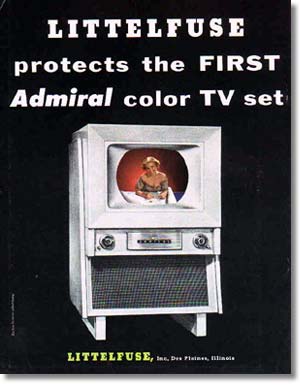 |
1956 |
NBC broadcasts the Sadlers Wells Ballet in Sleeping Beauty, choreographed by Frederick Ashton after Petipa, to an audience estimated at 30 million viewers. |
Dance Films Association, (DFA), first nonprofit service organization for dance and film, is founded by Susan Braun after her search for films on Isadora Duncan. ( www.dancefilmassn.org. |
Ampex sells the first practical videotape recorder, developed by Charles Ginsburg and Ray Dolby, with four heads and a transverse scanner using 2" tape running at 14,400 rpm. |
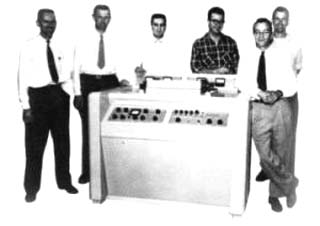 |
1957 |
A Dancer's World, directed by Peter Glushanok with Martha Graham, is produced by Nathan Kroll for Pittsburgh's WGED-TV, an alternative venue to commercial television. |
Invitation to the Dance, an all-dance film in three sections directed by Gene Kelly in 1952, is released. The first two parts, based on classical ballet, starring Igor Youskevitch, Claire Sombert, Tamara Toumanova, Diana Adams, and Claude Bessy, are less successful than the final section, in which Kelly dances in a live action/animation version of Sinbad the Sailor. |
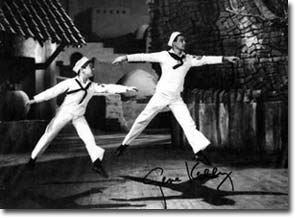 |
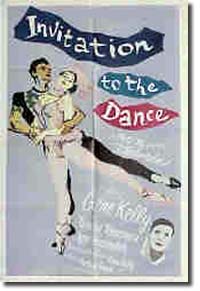 |
1958 |
Peter Glushanok directs Appalachian Spring with Martha Graham for Pittsburgh Public Television. |
 |
Shirley Clarke, a Martha Graham-trained dancer, makes Bridges-go-round, in which the bridges of New York dance through the film techniques of pixillation and optical printing. |
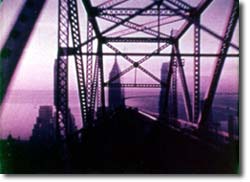 |
1959 |
Ludovic Kennedy directs The Sleeping Ballerina, a profile of Olga Spessivtzeva's life as a dancer and her time in a sanitarium. |
1960 |
Boston's WGBH, a public television station, begins the series A Time to Dance, hosted by Martha Myers and produced by Jac Venza. |
1961 |
West Side Story directed by Jerome Robbins and Robert Wise and choreographed by Robbins with dancers Rita Moreno, Eliot Feld, and Russ Tamblyn, wins an Academy Award. |
 |
1962 |
Worldwide, 951 videotape recorders are in use. |
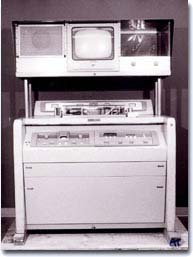 |
1963 |
Sony markets first home videotape recorder, an open-reel, 1/2" helical scan deck. |
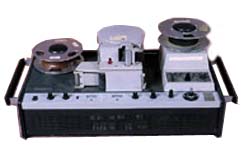 |
1964 |
Viva Las Vegas, directed by George Sidney, stars Elvis Presley and Ann-Margret in a "rock" musical with editing to the hard beat of the music. |
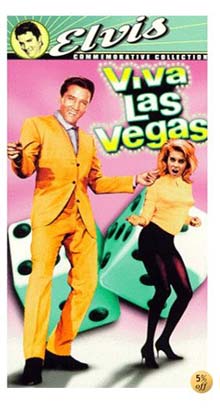 |
1965 |
Sony introduces first monochrome 1/2" Video Rover portapak, used almost immediately by New York video artist Nam June Paik. |
Variation V, a large scale mixed media work with film sequences by Stan VanDerBeek and TV images distorted by Nam June Paik, director Anne Arnbom, choreographer M. Cunningham. |
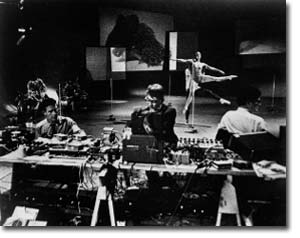 |
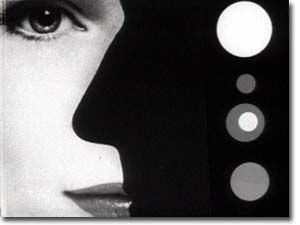 |
1966 |
“The Dance USA” series produced by Jac Venza for WNET/New York includes the program Dance: Four Pioneers, directed by Charles Dubin, on the work of Martha Graham, Doris Humphrey, Charles Weidman, and Hanya Holm. |
L'Adolescence directed by Vladimir Forgency, features Lubov Egorova teaching in Paris. |
Romeo and Juliet, directed by Paul Czinner using his multi-film-camera technique, stars Margot Fonteyn and Rudolf Nureyev. |
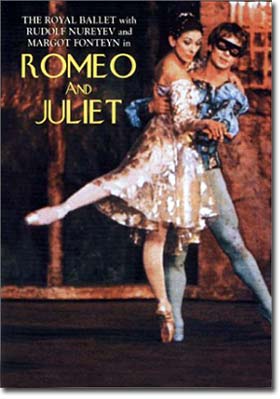 |
Tamara Toumanova appears in Alfred Hitchcock's Torn Curtain. |
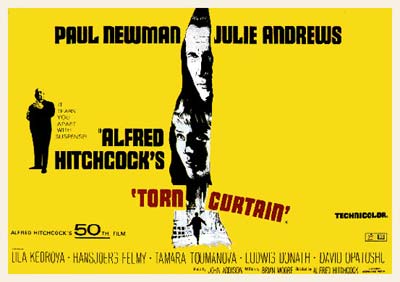 |
Hilary Harris directs Nine Variations on a Dance Theme. |
1967 |
Sony markets its DV2400, the world's first portapak VTR, leading to an explosion in do-it-yourself television and revolutionizing the medium. |
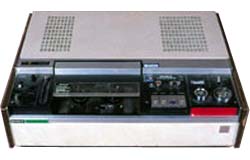 |
1968 |
Merce Cunningham's Assemblage in collaboration with filmmaker Richard Moore. |
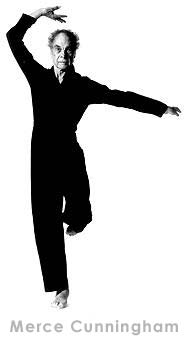 |
1969 |
Το They Shoot Horses , Don ' t They του Sydney Pollack , μία ταινία με θέμα ένα διαγωνισμό χορού έξι ημερών στα 1930 s , περιλαμβάνει μία χορογραφία της Gig Young . |
Sweet Charity, directed and choreographed by Bob Fosse, is saved by the performances of Chita Rivera, Shirley McLaine, Paula Kelly, and Sammy Davis Jr. |
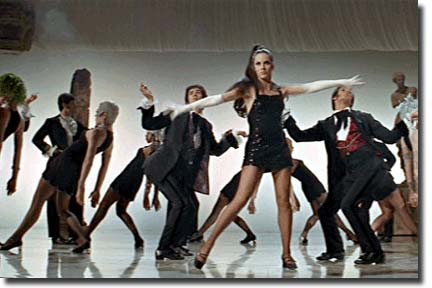 |
Sony introduces the first videocassettes—3/4" U-matic, 1 hour (available in the US in 1971) and allows other manufacturers to sell machines that play the cassettes, establishing a world standard. |
1970 |
An estimated 231 million television sets are in use worldwide |
1971 |
Doris Chase makes Circles I, the first of her many dance films. |
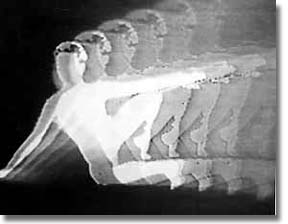 |
The first Dance on Camera Festival is sponsored by Dance Films Association (DFA). |
1972 |
Ballet for All series directed by Nicholas Ferguson is made in the U.K. and broadcast on BBC. |
Bob Fosse choreographs and directs Cabaret, winning an Academy Award for best director. |
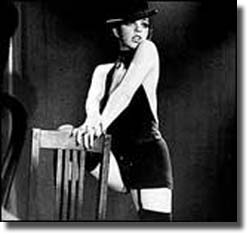 |
1973 |
The film American Ballet Theatre: A Close-up in Time, directed by Jerome Schnur, includes discussion of the history and repertory of the company as well as excerpts from Swan Lake, Les Sylphides, Rodeo, and The River, and the complete Pillar of Fire. |
1974 |
Alvin Ailey introduces Alvin Ailey, Memories and Visions, directed for PBS by Stan Lathan, which includes excerpts from Cry, The Lark Ascending, and Revelations. |
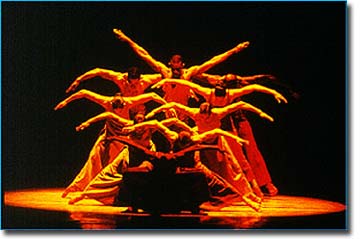 |
The first of three anthologies, That's Entertainment, is produced by MGM, directed by Gene Kelly. |
In the television series "Camera Three" Merrill Brockway directs a program on Merce Cunningham, A Video Event with M.C., combining four screens showing the same dance event from varying angles. |
1975 |
Videographer Charles Atlas and Merce Cunningham collaborate on Westbeth. |
David Hahn directs In a Rehearsal Room, which includes choreography by William Carter to the music of Pachelbel performed by Cynthia Gregory and Ivan Nagy. |
Dennis Diamond starts archiving dance performances on video at Dance Theater Workshop. |
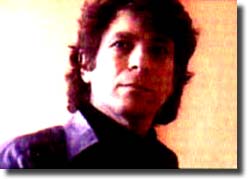 |
Sony offers the Betamax, the first popular home VCR, in November in the US. The console sells for $2295 and one-hour 1/2" tape cassettes for $15.95. Sony seeks to create a standardized format (as it had with U-matic in 1969) by getting seven other companies to produce machines to play Beta cassettes. |
1976 |
The landmark "Dance in America" series, begins its first year of broadcast with programs on the Robert Jeffrey Company, Twyla Tharp, Martha Graham, the Pennsylvania Ballet, and American Ballet Theatre. |
In October, JVC introduces VHS (Video Home System) to the marketplace. Sony sells a Betamax VCR deck and advertises that "you can tape something off one channel while watching another and build your own library of favorite shows". MCA/Universal and Disney file a lawsuit, finally won by Sony in 1984. |
1977 |
Herbert Ross directs The Turning Point, a feature fiction film set in the dance world. It features Anne Bancroft and Shirley McLaine in non-dancing roles, and Leslie Browne, Mikhail Baryshnikov, and a host of other stars performing. |
Twyla Tharp and Don Mischer explore the possibilities of dance on the small screen in Making Television Dance. |
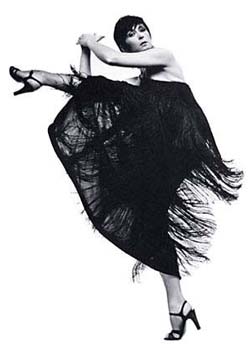 |
John Badham directs Saturday Night Fever, with John Travolta. |
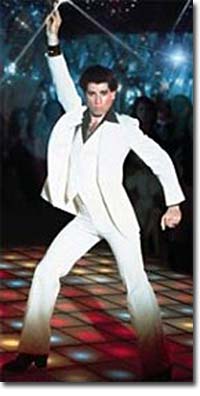 |
American Ballet Theatre's Nutcracker, choreographed by Mikhail Baryshnikov and directed by Tony Charmoli (who used a handheld minicam camera to walk into the dance action) airs on NBC. |
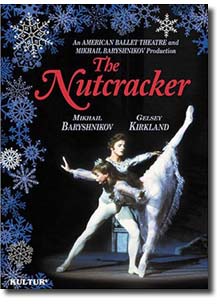 |
1978
|
Dune Dance, produced and directed by ex-Cunningham dancer Carolyn Brown, is based on improvisation; the dancers, led by Sara Rudner, play in the sand with such rhythmic precision that traditional ballet music was added for a winningly comic affect. |
|
Milos Forman directs the film version of the stage success Hair, with choreography by Twyla Tharp. |
 |
| Meredith Monk's Quarry, a meditation on a child's dreams about World War II, is performed by her group The House, directed by Amram Nowak. This is one of the few films produced by the Jerome Robbins Archive of the Dance Collection that have been cleared for release, another is Torse, a collaboration between Merce Cunningham and Charles Atlas that uses two synchronous films projected simultaneously on adjacent screens. The continuity between the two is produced by chance. |
1979 |
Sony introduces Beta scan, which allows "visible picture" while fast-forwarding. "The Magic of Dance" series, directed by Patricia Foy in the U. K., is narrated by Margot Fonteyn. |
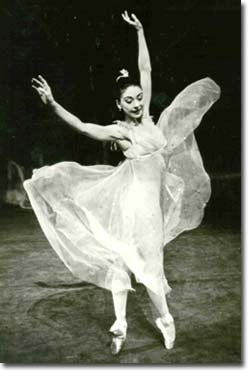 |
All That Jazz, directed and choreographed by Bob Fosse, wins an Academy Award for editing. |
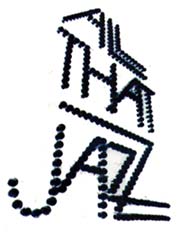 |
16 Millimeter Earrings by Meredith Monk. |
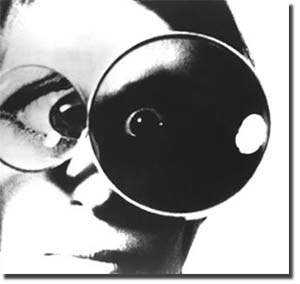 |
No Maps on My Taps, directed by George T. Nierenberg, explores tap dancing with historical footage from the 1930s and portraits of three master hoofers, with a finale at Harlem's Smalls Paradise (Spain, Dance on Camera 1998) |
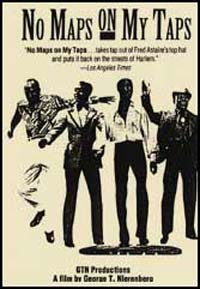 |
1980 |
Sony introduces first consumer camcorder. "Dance in America"'s Two Duets is unusual in that the first part, Jerome Robbins rehearsing Other Dances, followed by a performance of the piece by Baryshnikov and Makarova, (originated on film) the second part, Calcium Light Night choreographed by Peter Martins, was taped in a studio. Alan Parker's Fame, with choreography by Louis Falco, tells the stories of the High School of Performing Arts in New York City and becomes the basis for a TV series. |
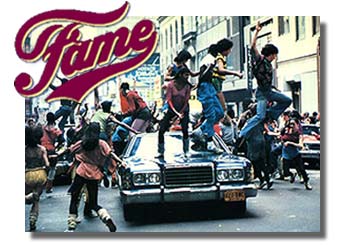 |
1981 |
The long-running series "Eye on Dance" hosted by Celia Ipiotis, begins in New York, first on cable and later on broadcast television. |
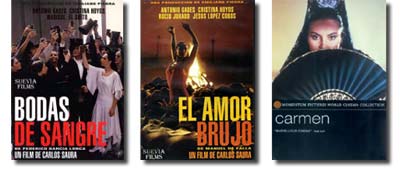 |
MTV begins 24/7 broadcasting of visualizations of popular music. Some of these clips include dance. |
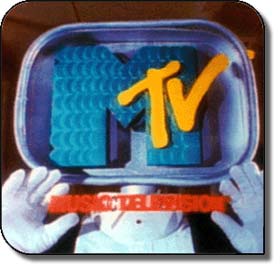 |
ABC Arts's A Portrait of Giselle is directed by Muriel Balash and hosted by Anton Dolin. |
1982 |
A film without words, Le Bal, directed by Ettore Scola, weaves dancing into the history of a small Paris ballroom from 1936 to 1983. |
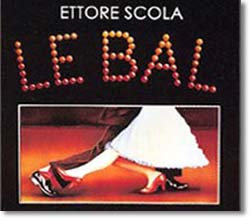 |
Ellis Island, an award-winning short film directed by Meredith Monk and Bob Rosen, and choreographed and composed by Monk, is filmed on location in New York City. |
Charles Atlas directs Channels/Inserts for the Merce Cunningham Dance Company. |
1983 |
He Makes Me Feel Like Dancin', Emile Ardolino's film about Jacques d'Amboise and hisNational Dance Institute, wins an Academy Award for best documentary feature and an Emmy in 1984. |
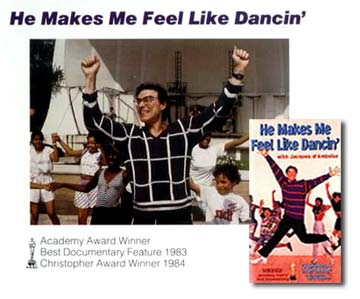 |
| Merrill Brockway directs a two-part documentary on George Balanchine for WNET. |
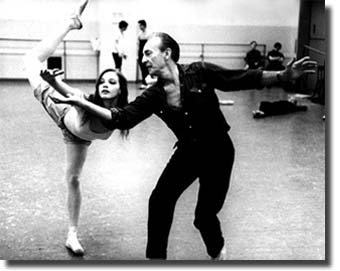 |
| Flashdance, directed by Adrian Lyne and choreographed by Jeffrey Hornaday, stars Jennifer Beal as a Pittsburgh welder, working as an exotic dancer at night, who finally decides to audition for the Pittsburgh Ballet, with the help of film stand-in dancer Marine Jahan. |
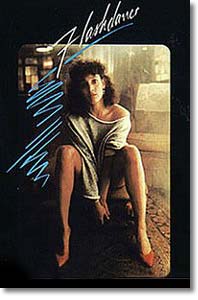 |
| Sony introduces Beta HiFi— VCR with FM-quality sound. |
1984 |
Backstage at the Kirov is directed by Derek Hart, who employs a camera mounted on a steadicam to allow a cameraman to follow "swans" as they enter the stage, giving viewers the dancers' view. |
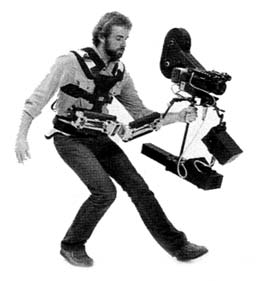 |
| Sony introduces the 8mm format. The VHS group counters with compact VHS known as VHS-C, but it only records for 20 minutes. |
1985 |
A Chorus Line, Richard Attenborough's film, demonstrates the problems encountered in trying to "open out" a production originally designed for the stage. |
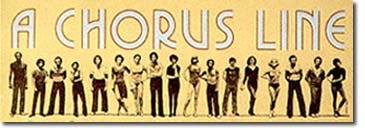 |
| "Alive From Off Center" a pioneering arts television series, debuts on American public television. The 12-season experimental series brings together dancers, choreographers, visual artists, film and video makers, public television, and cable and foreign broadcasters www.pbs.org/ktca/alive/alive.html. |
| 1986 |
Elliot Caplan directs Points in Space for the Merce Cunningham Dance Company. |
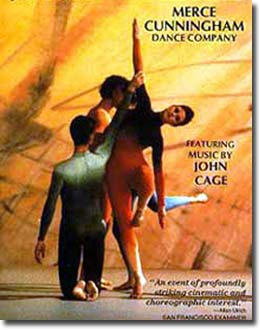 |
| 1987 |
Dirty Dancing, directed by Emile Ardolino, stars Patrick Swayze and Jennifer Grey as unlikely dance partners at a Borscht Belt resort. |
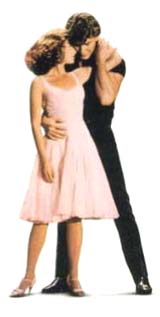 |
| Husk by Eiko and Koma. |
 |
| 1988 |
| Meredith Monk directs and choreographs the feature-length Book of Days. |
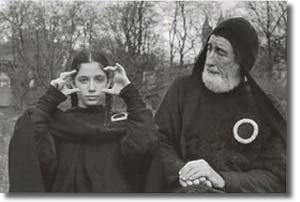 |
| Super VHS format is introduced, equaling 8mm in picture quality but not in sound. |
1989 |
| Sony introduces the Hi8 video format. |
1990 |
Dead Dreams of Monochrome Men, choreographed by Lloyd Newson/DV8, is reworked perceptively for the screen by director David Hinton. |
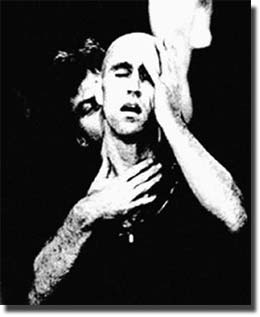 |
| In the televised version of Le Dortoir, choreographed by Danielle Tardif, Gilles Maheu, and Carhone 14 Dance Company, the inmates of a dormitory discover sex and love, God and death. |
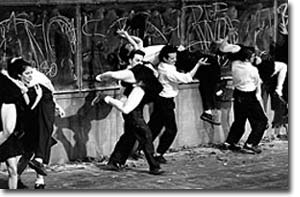 |
1991 |
In Roseland, choreographed by Wim Vandekeybus and directed by Walter Verdin, dancers in a fascinating old building take chances and move in a very fluid way. |
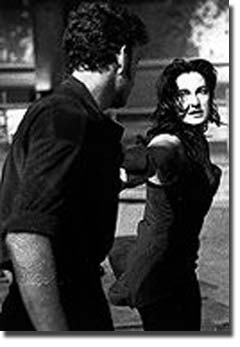 |
Elliot Caplan directs Cage/Cunningham, a documentary about the remarkable partnership of Merce Cunningham and John Cage. |
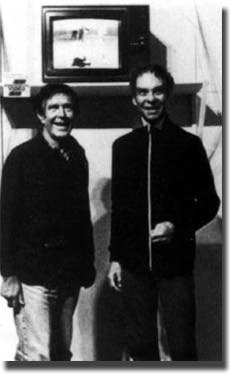 |
1992 |
A 35mm, wide-screen camera version of stage work, Beach Birds for Camera, choreographed by Merce Cunningham and directed by Elliot Caplan, begins in black and white and moves seamlessly to color, preserving the integrity of the original while adding the clarity of Caplan's vision. |
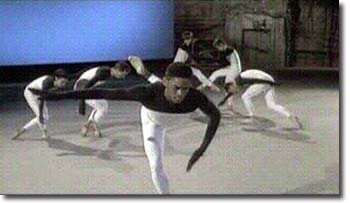 |
Peter Greenaway's visually arresting film Rosas, choreographed by Anne Teresa de Keersmaeker, is a woman's solo filmed in the empty foyer of the Ghent Opera in contrast black and white, with 35mm resolution and depth of field. |
 |
| The Dance Heritage Coalition is founded to provide the public access to dance materials, to continue documentation of dance employing both traditional methods and developing technologies, to preserve existing documentation, and to provide education regarding methods, standards, and practice for access, documentation, and preservation.www.danceheritage.org. |
The ongoing "Dance For The Camera" series is launched by the Arts Council of England (ACE) and BBC by Bob Lockyer and Rodney Wilson. Original dance films are made col-laboratively by teams of choreographers and directors for television. |
1993 |
The National Initiative to Preserve America's Dance (NIPAD) is launched with a grant from the Pew Charitable Trusts. Through its grantmaking and communication activities, NIPAD's mission is to foster America's dance legacy by supporting dance documentation and preservation as an integral and ongoing part of the creation, transmission, and performance of dance. |
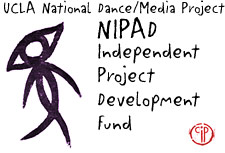 |
|
Le P'tit Bal, choreographed and directed by Philippe Decoufle and performed by him and Pascale Houbin, is a gem of a film about emotions portrayed through controlled movement. |
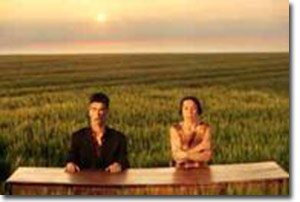 |
| Risible Chick, choreographed by Leslie Lindsay and directed by Nick de Pencier. |
Dancing, an eight-episode documentary series, developed and produced by Rhoda Grauer, includes dance traditions of eighteen different cultures. |
1994 |
Achterland, choreographed and directed by Anne Teresa de Keersmaeker and performed by her company Rosas, is a film of astonishing contrasts and dynamics, neatly captured by the camera and the editing. |
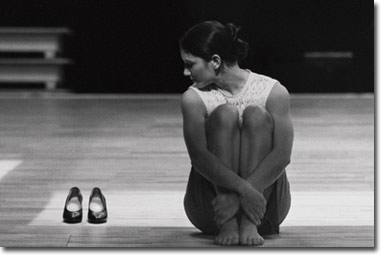 |
|
Outside In is supported by the Arts Council of England's "Dance for the Camera" series. Choreographed by Victoria Marks for six differently abled dancers from London's CandoCo, the film is directed by Margaret Williams. |
| Mothers and Daughters by Victoria Marks and Margaret Williams. |
| Touched, another "Dance for the Camera" film, is choreographed by Wendy Houston and directed by David Hinton. The sense of people in a bar, interacting in a claustrophobic, choreographed manner, is both captured and created by the camera |
1995 |
Sony offers the first "affordable," consumer-oriented digital video camcorders, with a direct line to nonlinear editing systems and lossless multigenerational editing, independent production seems to be on the horizon. |
| Frederick Wiseman's Ballet, a documentary, compresses ten weeks of rehearsal and touring with American Ballet Theatre. |
Donald McKayle, Carolyn Adams, and Julie Strandberg create the Rainbow Etude, based on McKayle's masterwork Rainbow 'Round My Shoulder, as part of the Etude Project of the American Dance Legacy Institute. |
The village trilogy, choreographed, directed, and produced by Laura Taler. |
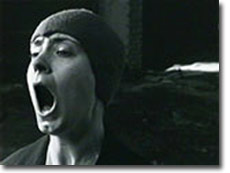 |
|
Falling Down Stairs, produced by Rhombus Media, intimately chronicles a collaboration between Mark Morris and Yo-Yo Ma. |
| Boy, choreographed by Rosemary Lee and directed by Peter Anderson, is commissioned by the BBC and the Arts Council of England as part of the "Dance for the Camera" series. |
 |
| Hands also commissioned by the "Dance for the Camera" series, choreographed and performed by Jonathan Burrows, is a movement exploration using only hands. |
| The George Balanchine Foundation Video Archives is initiated. |
1996 |
Mats Ek's Carmen, directed by Gunilla Wallin, is an imaginative treatment of unusual choreography. |
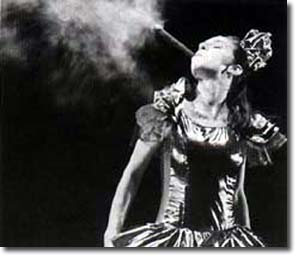 |
| Enter Achilles, choreographed by Lloyd Newson and directed by Clara van Gool, is a strong narrative, mixing reality and fantasy. The dance movement and natural gesture are enhanced by interaction with the camera and editing. |
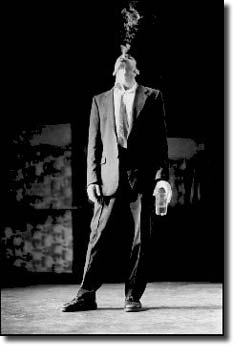 |
In CRWDSPCR, directed by Elliot Caplan, Merce Cunningham choreographs using the computer program LifeForms. |
|
Lodela, choreographed by Jose Navas and directed by Philippe Baylaucq, is an arresting duet inspired by The Tibetan Book of the Dead. |
1997 |
Bella Figura, choreographed by Jiri Kylian and directed by Hans Hulscher, is the culmination of a collaboration beginning with the stage films of Kylian' s early works Sinfonietta, Symphony of Psalms, and Soldiers' Mass. With totally unobtrusive camera work and editing, the choreographic design and the dynamics of the performance are always preserved. |
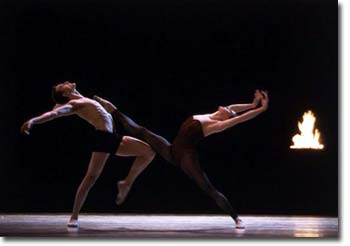 |
1998 |
Matthew Diamond's Oscar-nominated documentary Dancemaker follows Paul Taylor and his dance company from rehearsal to a tour through India and a New York season threatened by a strike. |
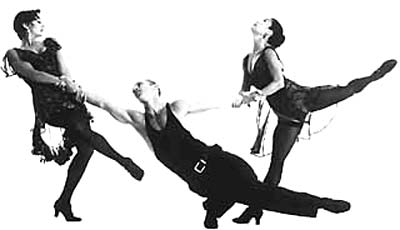 |
The first UCLA National Dance/Media Fellowship Program is launched by the UCLA Center for Intercultural Performance. Over three years (1998-2000), the program admits accomplished professionals and UCLA graduate students from the field of dance/media to develop sophisticated, practical models for dance documentation that can be disseminated to and duplicated by other individuals and institutions. |
1999 |
A Midsummer Night's Dream, choreography by George Balanchine, performed by the Pacific Northwest Ballet, directed by Ross MacGibbon, filmed for High Definition TV. |
Dennis Diamond, one of the original video archivists in New York, begins offering Quicktime video clips of dance companies for the Internet. |
|
Bill T. Jones collaborates with Paul Kaiser and Shelley Eshkar on Ghostcatching, an innovative virtual dance created using motion capture technology. |
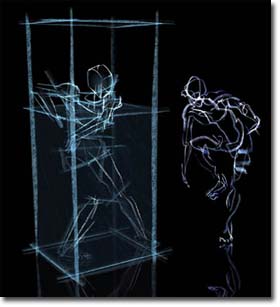 |
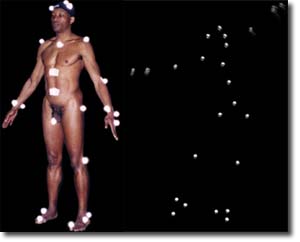 |
Sistersister choreographed by Susana Szperling and directed by Silvina Szperling (Argentina). |
 |
2000
|
In Billy Elliot, directed by Stephen Daldry with choreography by Peter Darling, a working-class boy in a northern British town decides he wants to dance instead of taking boxing lessons, and he finds a dance teacher who thinks he should audition for the Royal Ballet. Years later, his father and brother come to London to watch him in a performance of Matthew Bourne's Swan Lake.
|
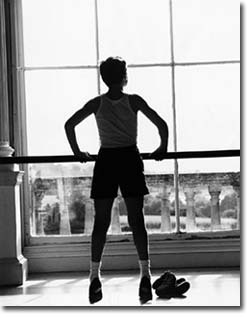 |
| Kammer/Kammer by William Forsythe. |
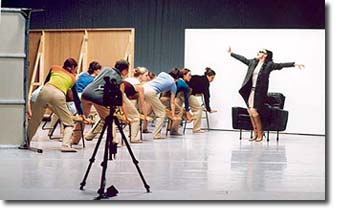 |
Birds directed by David Hinton, winner of the IMZ Dance Screen Award 2000, and the choreographic advisor Yoland Snaith. |
 |
2001 |
Returning Home, directed by Andy Wilson. |
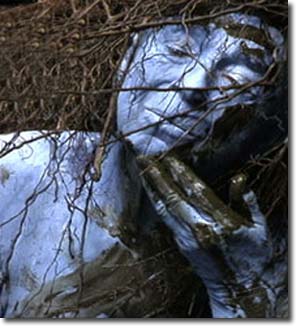 |
2002 |
Red Dolly choreographed and directed by Shelley Love. |
2004 |
| In Pages directed by Elisabeth Coronel and choreographed by Saburo Teshigawara , co-founder of KARAS dance company, in the fitting out of his installations “Dance on air”. |
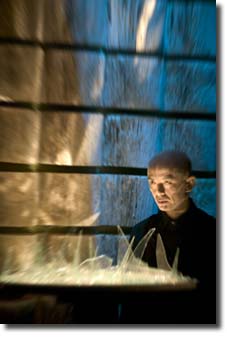 |
2005 |
Blush, the film, which is based on the live performance of his company, Ultima Vez, is directed and choreographed by Wim Vanderkeybus. |
 |